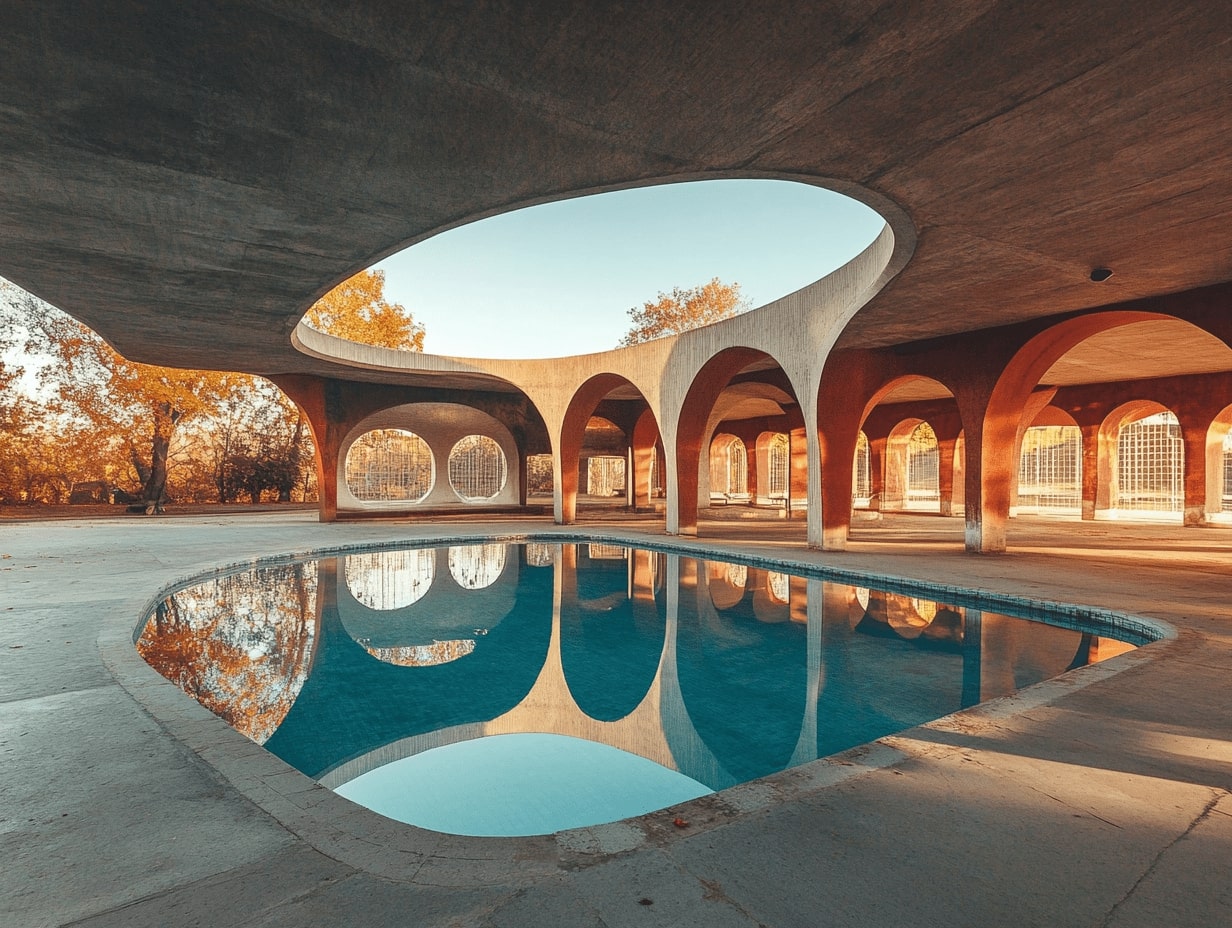- Home
- Articles
- Architectural Portfolio
- Architectral Presentation
- Inspirational Stories
- Architecture News
- Visualization
- BIM Industry
- Facade Design
- Parametric Design
- Career
- Landscape Architecture
- Construction
- Artificial Intelligence
- Sketching
- Design Softwares
- Diagrams
- Writing
- Architectural Tips
- Sustainability
- Courses
- Concept
- Technology
- History & Heritage
- Future of Architecture
- Guides & How-To
- Art & Culture
- Projects
- Interior Design
- Competitions
- Jobs
- Store
- Tools
- More
- Home
- Articles
- Architectural Portfolio
- Architectral Presentation
- Inspirational Stories
- Architecture News
- Visualization
- BIM Industry
- Facade Design
- Parametric Design
- Career
- Landscape Architecture
- Construction
- Artificial Intelligence
- Sketching
- Design Softwares
- Diagrams
- Writing
- Architectural Tips
- Sustainability
- Courses
- Concept
- Technology
- History & Heritage
- Future of Architecture
- Guides & How-To
- Art & Culture
- Projects
- Interior Design
- Competitions
- Jobs
- Store
- Tools
- More
The Role of Architectural Strategy in Public Spaces: Creating Inclusive and Sustainable Designs
Discover how architectural strategy transforms public spaces into inclusive, functional, and sustainable hubs for community engagement. Explore the integration of accessibility, cultural identity, and eco-conscious design in shaping spaces that foster social connections and adapt to future needs.

Public spaces are the heartbeat of our communities, shaping how we connect, interact, and experience the world around us. From bustling city squares to serene parks, these spaces influence our daily lives in ways we often take for granted. But have we ever stopped to think about the architectural strategies behind their design?
Architectural strategy isn’t just about aesthetics; it’s about creating environments that foster inclusivity, functionality, and a sense of belonging. The way a space is planned and structured can transform it into a hub of activity or a peaceful retreat. By understanding the role of thoughtful design, we can see how these strategies impact everything from social interactions to environmental sustainability.
Let’s explore how architectural strategy shapes the public spaces we use every day and why it matters more than we might realize.

Table of Contents
ToggleUnderstanding The Role Of Architectural Strategy In Public Spaces
Architectural strategy integrates functionality, accessibility, and aesthetics to shape public spaces. It enhances the usability of these spaces by addressing the diverse needs of their users, including accessibility features like ramps, clear pathways, and seating areas for varied age groups. Effective design ensures that public spaces cater to local community activities, reflecting cultural, economic, and social values.
Sustainability plays a critical role in architectural planning. Incorporating energy-efficient lighting, water management systems, and sustainable materials reduces environmental impact while improving space longevity. For example, urban parks often use recycled materials for benches and solar-powered lights to enhance sustainability.
Safety and comfort influence public engagement. Proper lighting, open sightlines, and crime prevention techniques create environments where people feel secure. Additionally, shaded areas and weather-resistant installations improve user experience in outdoor spaces.
Flexibility is essential for adapting to evolving community needs. Modular structures and multifunctional layouts allow spaces to host different events, such as markets, performances, and recreational activities. For instance, plazas with movable furniture and temporary pavilions perform well in accommodating various seasonal uses.
Key Elements Of Architectural Strategy
Architectural strategy integrates multiple components to design public spaces that are meaningful, efficient, and sustainable. Key elements ensure spaces accommodate diverse user needs while maintaining visual and ecological harmony.
Functionality And Accessibility
Design prioritizes ease of use and inclusivity. Features include ramps, wide pathways, and tactile surfaces for users with disabilities. Seating areas cater to all age groups, with shaded and ergonomic options enhancing comfort. Clear signage improves navigation in large spaces, ensuring functionality aligns with community needs.
Aesthetic Appeal
Visual coherence reinforces a space’s identity. Including local materials and designs reflective of cultural heritage fosters a connection with the surroundings. Landscaping elements, such as native plants and water features, amplify aesthetic value while offering relaxation and visual continuity with urban or natural contexts.
Sustainability Practices
Eco-conscious designs minimize environmental impact. Rooftop gardens, permeable pavements, and rainwater harvesting systems support resource conservation. Energy-efficient lighting reduces electricity use, and recycled or sustainable materials underpin environmentally responsible construction. Sustainability enhances long-term viability and community well-being.

Impact Of Architectural Strategies On Public Spaces
Architectural strategies significantly shape the dynamics of public spaces, influencing how communities interact and thrive. Design elements affect engagement, equity, and cultural expression in shared environments.
Enhancing Community Engagement
Architectural strategies enhance community engagement by encouraging interaction and participation. Open layouts, such as plazas and park spaces, create opportunities for gatherings, events, and public dialogue. Incorporating multifunctional features, like seating integrated with greenery, attracts diverse activities and promotes longer use of the space. Public art installations and interactive designs foster connections among individuals.
Promoting Social Equity
Strategies in public space design promote social equity by addressing accessibility and inclusivity. Barrier-free pathways, tactile indicators, and ramps ensure spaces are usable for individuals with varying physical abilities. Thoughtful layouts, like mixed-use areas and affordable recreational zones, reduce socioeconomic barriers and encourage diverse participation. Equitable distribution of public spaces across urban and suburban regions also supports balanced access.
Supporting Cultural Identity
Architectural approaches reflect cultural identity by incorporating elements that resonate with local heritage and traditions. Materials, colors, and patterns endemic to the region create a sense of authenticity. Landmarks and monuments integrated into public designs preserve historical narratives while promoting local pride. Spaces designed for cultural festivals or traditional performances provide platforms for celebrating shared identities.
Challenges In Implementing Architectural Strategies
Architectural strategies in public spaces face multiple challenges that impact their design, execution, and functionality. Addressing these challenges is vital to ensure spaces serve their intended purpose effectively.
Budget Constraints
Limited funding often restricts the scope and quality of architectural efforts. Public projects must allocate resources to various priorities, leaving minimal budget for innovative or high-quality materials. For example, energy-efficient lighting or locally sourced sustainable materials may be excluded due to cost. Balancing cost-effectiveness with long-term value remains a significant challenge.
Balancing Modernity With Tradition
Preserving cultural identity while incorporating contemporary designs is intricate. Integrating modern features like interactive technology with traditional aesthetics requires precise planning. For example, adding digital signage in heritage-rich plazas can disrupt the visual harmony if not carefully integrated. Success depends on achieving a seamless blend that respects history while meeting current demands.
Navigating Environmental Concerns
Sustainability challenges arise in mitigating the environmental impact of public space development. Strategies must account for reducing carbon footprints through energy-efficient practices, water conservation, and sustainable materials. Incorporating green infrastructure like permeable pavements and native vegetation is complex in dense urban settings. Attention to environmental balance ensures spaces remain sustainable across generations.

Successful Examples Of Architectural Strategy In Public Spaces
Architectural strategy has transformed public spaces worldwide, creating landmarks that embody functionality, inclusivity, and sustainability. Below are notable examples showcasing how thoughtful design fosters community engagement and cultural identity.
Iconic Urban Parks And Plazas
Urban parks and plazas demonstrate how architecture enhances interaction and recreation. New York City’s Central Park serves as a prime example, with its balance of green spaces, walking paths, and recreational areas supporting various activities. Piazza del Campo in Siena, Italy, combines accessibility with heritage preservation, creating a cultural hub that hosts public events and local gatherings. Millennium Park in Chicago exemplifies multifunctional spaces, featuring the Cloud Gate sculpture and outdoor performance areas integrating design and urban life.
Revitalized Community Centers
Revitalized community centers illustrate the role of architecture in addressing evolving social needs. The Stapleton Recreation Center in Denver integrates sustainability with functionality by utilizing daylighting strategies and water-efficient landscaping. The Rotterdam Central Library in the Netherlands blends modern design with communal purpose, offering open reading areas and event spaces. These redesigned facilities strengthen community bonds by promoting learning, recreation, and interaction.
Innovative Pedestrian-Friendly Designs
Pedestrian-friendly designs reimagine public spaces for safety and accessibility. The High Line in New York City converts an abandoned railway line into an elevated park, prioritizing walkability and adaptive reuse. Copenhagen’s Strøget, one of the world’s longest pedestrian streets, enhances urban livability through eco-conscious planning and efficient transit integration. Barcelona’s “Superblocks” exemplify neighborhood-centric designs, reducing traffic and encouraging social interaction while fostering environmental sustainability.

Future Trends In Public Space Architecture
Emerging trends in public space architecture reflect rapid advancements in technology, environmental priorities, and societal values. These trends focus on creating adaptable spaces that align with the needs of modern communities.
Smart And Interactive Design
Architects are incorporating smart technologies to enhance functionality and user experiences in public spaces. Features like responsive lighting systems, interactive wayfinding kiosks, and connected public Wi-Fi support seamless interaction. For instance, motion-activated lighting adjusts to foot traffic patterns to improve safety and energy efficiency. Smart benches equipped with USB charging ports and solar panels offer practical solutions for urban areas. Augmented reality (AR) installations add immersive educational and cultural experiences to parks and museums.
Green Infrastructure Integration
Sustainable design remains at the forefront, with increasing emphasis on green infrastructure. Public spaces are integrating biophilic elements like living walls, rooftop gardens, and urban forests to counteract urban heat islands and improve air quality. For example, green roofs on transit hubs or libraries both regulate temperature and reduce stormwater runoff. Utilizing permeable surfaces, such as rain gardens, aids natural water absorption and minimizes flooding risks. These designs also provide habitats for wildlife, promoting biodiversity in urban settings.
Emphasis On Inclusive Spaces
Inclusion drives modern architectural strategies to ensure accessibility for all users. Designs incorporate elements that address diverse physical, sensory, and cognitive needs, such as tactile pathways for the visually impaired or playgrounds with accessible equipment. Flexible layouts adapt to multi-generational use, offering spaces like shaded seating for older adults alongside open play areas for children. Public artworks and cultural motifs reflect diverse identities, fostering a sense of belonging in multicultural communities.
Conclusion
Architectural strategy plays a critical role in shaping public spaces that are inclusive, functional, and reflective of community values. By prioritizing accessibility, sustainability, and aesthetic coherence, we ensure these spaces meet diverse user needs while fostering social interaction and cultural identity. Public spaces designed with thoughtful strategies promote engagement, address environmental impacts, and adapt to changing societal dynamics.
Navigating challenges like budget constraints, balancing tradition with modernity, and ensuring long-term sustainability demands innovation and careful planning. However, successful examples—from the High Line to Millennium Park—showcase the transformative power of architectural strategy in revitalizing urban environments and enhancing community life. By integrating forward-thinking design elements such as smart technologies and green infrastructure, we align public space architecture with future priorities and evolving community values.
- and landscape architecture
- Architectural strategy
- architecture for social inclusion
- community-centered design
- eco-friendly public spaces
- environmentally sustainable design
- Green Architecture
- inclusive architecture
- inclusive design principles
- public realm planning
- Public Space Design
- public space innovation
- sustainable architecture
- sustainable public spaces
- urban design strategies
- urban planning
- urban sustainability
Submit your architectural projects
Follow these steps for submission your project. Submission FormLatest Posts
Enhancing Urban Life: Best Practices for the Design of Walkways in Urban Areas
Discover the transformative role of urban walkway design in creating safer, sustainable,...
Playgrounds: Landscape Architecture for Inviting Interaction
Playgrounds in landscape architecture are more than spaces for activity—they are environments...
Future Trends in Urban Development: Embracing Sustainability and Smart Technology
Explore the future of urban development in this insightful article that highlights...
Understanding Having an Architectural Perception in Public Spaces for Better Community Engagement
Explore the transformative power of architectural perception in public spaces. This article...












Leave a comment